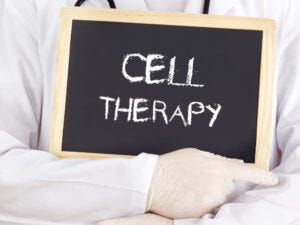Content Spotlight
Podcast: MilliporeSigma says education vital to creating unbreakable chain for sustainability
MilliporeSigma discusses the importance of people, education, and the benefits of embracing discomfort to bolster sustainability efforts.

The active release mechanism of Gibco CTS Detachable Dynabeads aims to drive down the cost of cell therapy manufacturing, says Thermo Fisher.
Through its Gibco division, life sciences services firm Thermo Fisher has launched its next-generation platform of dynabeads – polymer particles used for the adsorption of bioreactive molecules or cells – targeting cell therapy developers.
According to the firm, the CTS Detachable Dynabeads contain an active release mechanism that uses a release buffer that helps actively detach Dynabeads from a target cell at any point during the manufacturing process.

DepositPhotos/gwolters
This offers “process flexibility, compatibility with automation, and scalability,” the firm says, helping users achieve greater control of their cell therapy process.
The Dynabeads form part of the Gibco portfolio of buffers, cell culture media, and reagents, and are part of Thermo’s efforts to address the high cost of cell therapy development and manufacture.
“We support the research work,” said Thermo Fisher’s CEO Marc Casper. “Our tools are key enabling tools. You see that in the Gibco cell therapy technologies that we have and we help drive that.”
Speaking at the Handelsbanken 3rd Annual Life Science Innovation Day last week, he said: “The big challenge here is cost, right? And what we decided to do is ultimately build the experience to help the innovative life sciences companies, biotech companies drive the cost down so more patients can benefit from these medicines.”
Along with the media and reagents, Casper said Thermo Fisher’s full business scope is helping to drive cell therapy costs down. Beyond equipment and tools, the firm has a contract manufacturing network that includes significant cell and gene therapy capabilities.
“Our goal with our clients is to drive the cost down meaningfully so that more and more patients can benefit. It’s going to be a journey. It took 20 years or so on the monoclonal antibody side. And we’re going to try to do it as fast as we possibly can because it’s worth it, right? The cures that are being brought out are huge, and if we can make it affordable, it will get adopted more significantly.”
You May Also Like